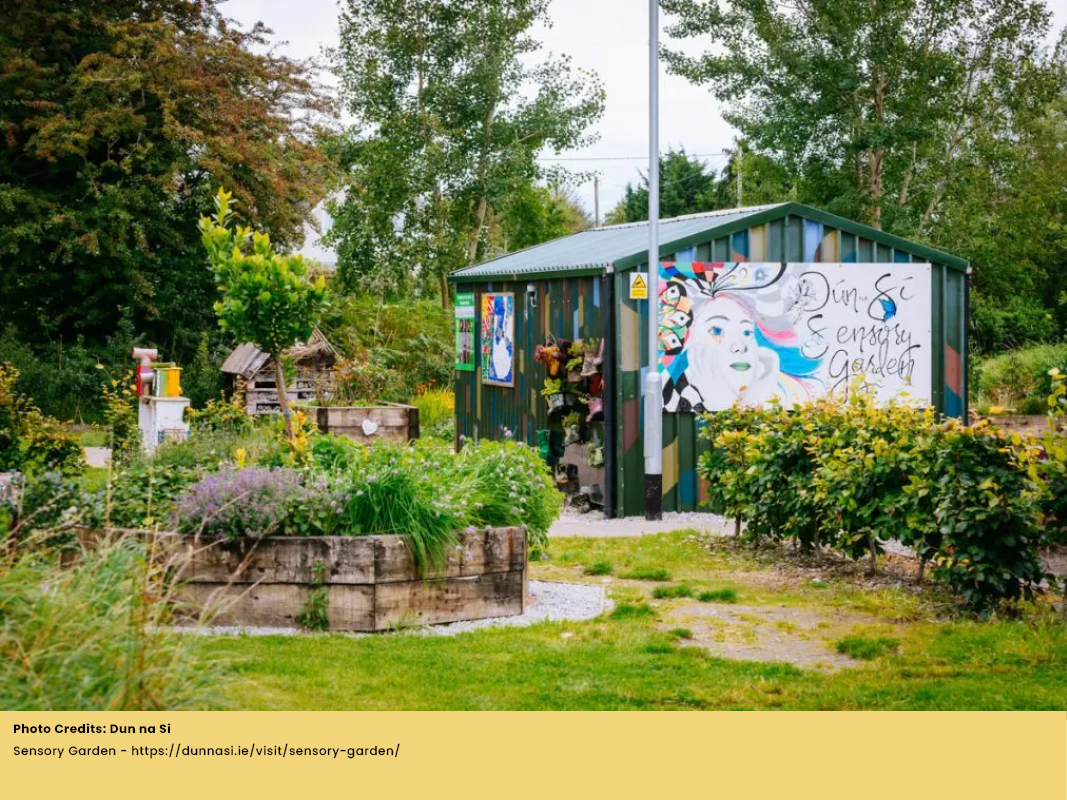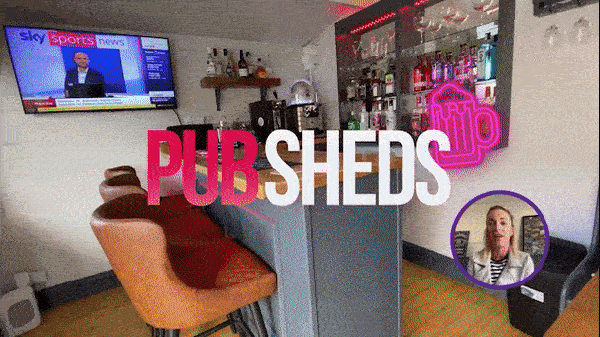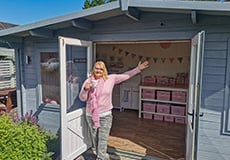Read our guide below on how to create a sensory garden.
What is a Sensory Garden?
A sensory garden is all about stimulating and engaging the five senses; sight, taste, smell, touch and sound. They are a fantastic way to connect yourself with nature and to make you more aware of your surroundings.
Sensory gardens can either be quiet places where the surroundings are calm and relaxing, or they can be busy with elements that help stimulate activities.
Why make a Sensory Garden?
According to the Sensory Trust ‘we experience everything through our senses and this creates multi-sensory memories that we carry with us’. Therefore, the more we interact with them the higher chance the experience will be richer and you will remember how the senses reacted in those moments.

Preparing Your Sensory Garden
Before you dive on in head first you will need to plan out what your sensory garden will look like. Start by thinking about the below questions:
- Who is the Sensory Garden going to be for? – This will help you understand exactly how you will help stimulate and engage the senses. For example, a sensory garden for young children will most likely need to be more vibrant and busier, whereas somewhere that will be used by adults may need to be more calming.
- When will the Sensory Garden be used? – Is the garden going to be used all year round or just during the summer months? How many people will be using the garden? You will need to answer these questions to then know what to add to the garden.
- Who will maintain the Sensory Garden? – If the sensory garden is going to be used at a school, you will need to take into consideration the school holiday period and who will maintain it over this period. Perhaps the garden will be part of a wellbeing aspect in your workplace, but again you will need to consider who will look after this.
- What resources do you have? – Knowing what materials and manpower you have will help you realise what will be achievable for your sensory garden. Can you ask for donations? Will a team of people come together to create it? Will it require fundraising for?
The key to a successful sensory garden will come from how well you have planned it. These gardens can take some time to create and come together so you want to be as best prepared as possible.

What To Include in Your Sensory Garden?
If you are unsure on what to include in your sensory garden your best bet is to carry out some research. Sites like Pinterest and Instagram house a lot of visual inspiration that will help you know what kind of direction you wish to go in.
Remember you want to engage your senses with the garden so think about how you can provide the best experience for this.
Touch
Different plants have different textures that you can touch and feel, succulents tend to have smooth surfaces whilst bark is a lot more rough and rigid. If you wish to include animals these also have a whole variety of different sensations when touching, just make sure you can appropriately care for them before adding them to the garden.
Sound
Nature comes with a lot of different noises from the rustling sound of leaves to the snap of twigs to the whistling of birds. Different seasons will bring different sounds so take into consideration what the purpose of the garden is. For somewhere that needs to be tranquil perhaps some running water would be the perfect addition!
Sight
Do you want your garden to be bright and bold or would you like it to be subtle? The answer to this will provide you with a solution as to what to fill your garden with. There are lots of way you can create a diverse range of colours, patterns, shapes and sizes with nature. You can also get creative with some nifty DIY accessories.
Taste
This one can be a bit tricky to cater towards but think about what you can taste from the garden. Herbs are a great way to get your taste buds tingling, things like Mint, Coriander, Basil and Garlic are easy to grow and look after. You could also include a vegetable patch or fruit bushes (e.g. strawberries), which not only provides yummy foods but also provide an important insight into how you can be sustainable and grow your own.
Smell
The freshness of the garden can be strong and significant, you will get different smells from different plants, seasons and even times of the day. Flowers like geraniums, roses and lavender have particularly strong aromas. You then have things like freshly cut grass, damp leaves and mud that bring in other fresh scents.

Teamwork
So now you have a fairly reasonable idea of what you want to do, you will need to assign a team to help get the garden going and bring your plan to life. If you’re doing it for a school, charity or club create a committee or ask for volunteers to help you out. Friends and family may be able to lend a hand too. A top tip would be to create a ‘To-Do List’ of all the things that need doing, then delegate out each task to the relevant person – many hands make for light work!
Don’t forget to document and share your sensory garden’s journey for others to see and support.
Sources:
Sensory Trust – https://www.sensorytrust.org.uk/resources/guidance/sensory-gardens-planning
Kew Gardens – https://www.kew.org/read-and-watch/how-to-create-a-sensory-garden





